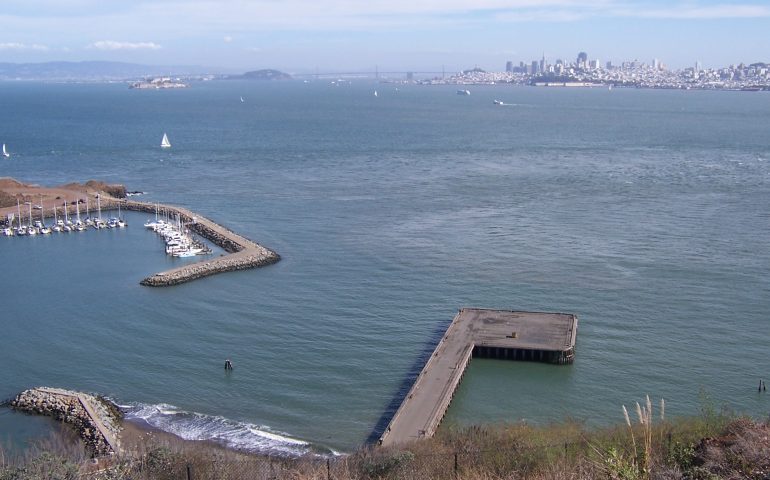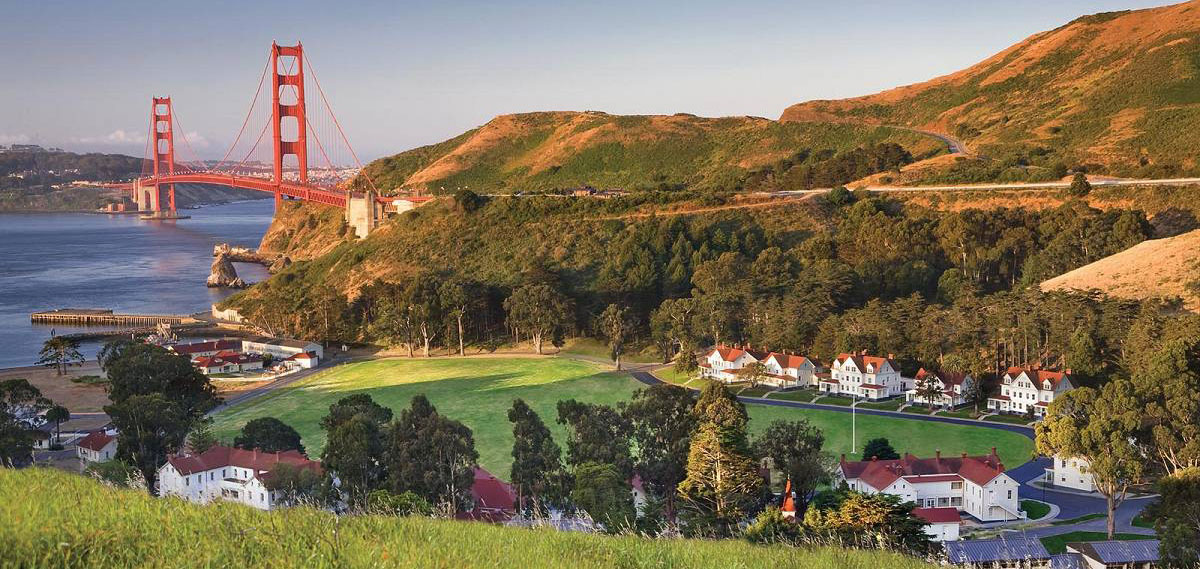
“Can I get to the pier?” was the question I asked the Park guard blocking the road with his vehicle. “Drive around the parking lot and don’t disturb the festivities.” “Uh, OK.” Soon I was fishing on the pier with absolutely no success.
Shortly thereafter, three saffron-robed monks showed up near the entrance of the pier where they proceeded to dump several pails of “something” into the water near the shoreline (while being filmed by a photographer. At first I thought it might be some sort of fish food but then I noticed much of it was white or gray and some was floating away (ashes?). Eventually, after they left, I wound up back by the front of the pier and did notice what looked like white lotus flowers floating amidst the green waters of the bay (but I still have no clue).
An hour or so later I was headed out of the park and thinking how things have changed over the years—and not necessarily for the better.
Still later, in checking out the “historic luxury” lodge’s website, I found out the rooms were cheap—if you have the “Do Ri Mi” and can afford a $569-$929 (+10% tax) room rates. As to activities—“today’s adventurers can explore nature, experience Northern California culture and renew themselves in stately hotel accommodations amid breathtaking views and stunning parklands… Within minutes, visitors can beachcomb along the Pacific, ride a San Francisco cable car or hike the Marin Headlands. No matter what the pursuit, Cavallo Point is the ideal ‘base camp’ for discovery and new experiences in Northern California.”
There is no mention of the proletarian pier fishing available near the front door of the expensive lodge.
<*}}}}}}}}}>< — Times and attitudes change, at least for some. There was a time when sharks and rays were seen as trash fish and when caught most were simply killed and thrown back into the water or tossed onto the pier. That attitude has changed for many but not all anglers. For both Pier Fishing In California (PFIC) and United Pier and Shore Anglers of California (UPSAC), one of the formerly reviled species that has become popular is bat rays. Although the fish are fairly good eating, we generally release them to fight another day. And, they do put up a terrific fight (battle) which has earned them the nickname “mud marlin.” For nearly a dozen years, until Berkeley Pier closed, an annual “Mud Marlin Derby” was held at the pier where upwards of a hundred people a year would try to catch — and release the affectionate beasts. Affectionate? Yes, if you’ve ever been to one of the petting pools at zoos and aquariums that have rays swimming around to be petted. What about the stingers which earned them the popular name sting rays? Turns out they can be clipped about once a month like fingernails and without those stingers they are not a danger. And then there are those Bette Davis eyes! The result is an attempt to protect the big fish and see they are not wasted.
One trip to Fort Baker had me testing the water. After arrival and fishing at an inshore area for a while I noticed something lying on the surface of the pier out toward the end. From a distance it looked like it might be a bat ray. I ambled out to the spot and sure enough it was a big bat ray, a dead bat ray, that was turned on its back for all to see.
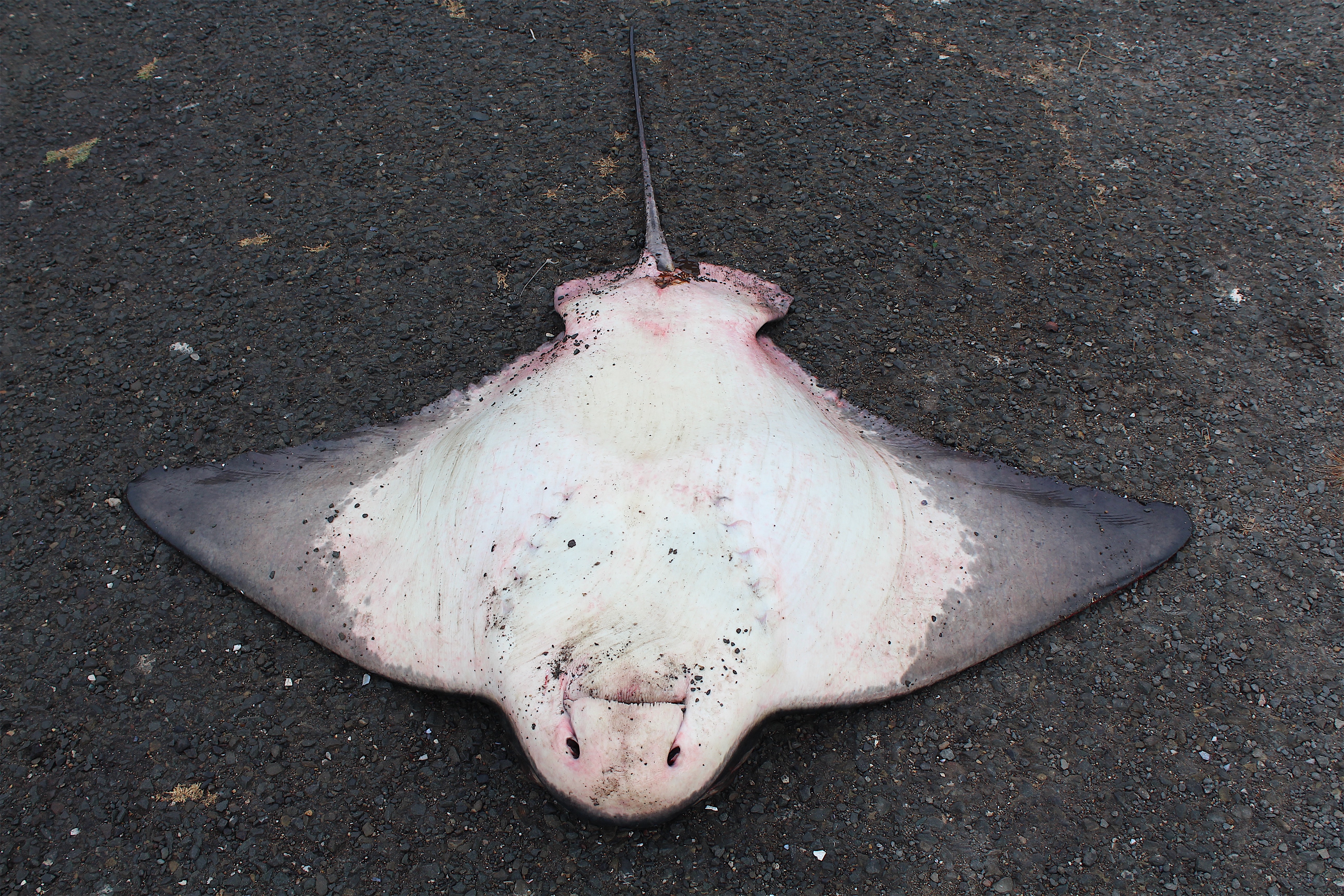
My immediate thought was is someone planning to eat the ray? If not, why had it been killed? Nearby was a group of anglers who seemed camped out at the end with their chairs, coolers, BBQ’s, and plethora of fishing equipment. I ambled over and asked one of the guys what they intended to do with the bat ray; were they going to eat it? No was the answer but then he said a nearby angler, a Chinese gentleman fishing for jacksmelt, had asked if he could have it. That gent told me he planned to eat it. He would slice off the tails and take them home and cook them. I mentioned that was good.
I don’t have a problem with anglers catching and eating fish but I do have an aversion to anglers that think they need to kill and display fish—and then do not use them. But, everything sounded O.K.
Later, I noticed the group caught two more large bat rays and they were dutifully lined up in a row with the original ray for the tourists to view. It seemed wrong to me and I wondered why the jacksmelt angler didn’t slice off the wings and put them in his cooler. However, eventually I did see him head over and start cutting off the wings. When I left he was also leaving and I hoped no additional rays were caught.
Personally, I prefer to return the rays to the water and I hope most people adopt that philosophy.
<*}}}}}}}}}>< — One of the things that has changed over the years, especially during the summer “tourist season,” is the number of people visiting the pier — most of whom are non-anglers. That fact was most noticeable during a weekend visit in August of 2018. When I arrived early in the day the normal number of anglers was on the pier and the limited parking spaces were almost gone. It seemed it would be a typical day. But what turned out to be only a fair fishing day, one that might seem dull, was never that due to the crowds of people.
Literally thousands of bicyclists (my estimate) came riding down the bike trail from the Golden Gate Bridge and most seemed to stop by the pier to take a selfie of themselves with the famous bridge in the background. Many headed out onto the pier. Although most were speaking foreign tongues, I did have nice talks with several including a couple of couples from Taiwan and Norway. I always enjoy playing mini-tour guide and pointing out the history of the area where I am fishing and this day was no exception.
The number of visitors was amazing and given that most were wearing shorts and T-shirts it was obvious that they were not expecting the cold fog and wind by the pier (which, of course, is typical San Francisco weather for August). Of course years ago you didn’t have tourists renting bikes on Fisherman’s Wharf, riding through the streets of San Francisco, riding by Chrissy Field, and then heading up, on, and over the Golden Gate Bridge. At the far end they head down the bike trail to Fort Baker and most seem to stop before heading on to downtown Sausalito and the ferries that will take them back to San Francisco. I prefer a car. But it certainly made the day interesting.
<*}}}}}}}}}>< — As mentioned, the views from the bridge are always interesting and sometimes they are stunning. I always have my camera and sometimes I seem to be paying as much attention to my camera as to my rod — a bad thing for a fisherman.
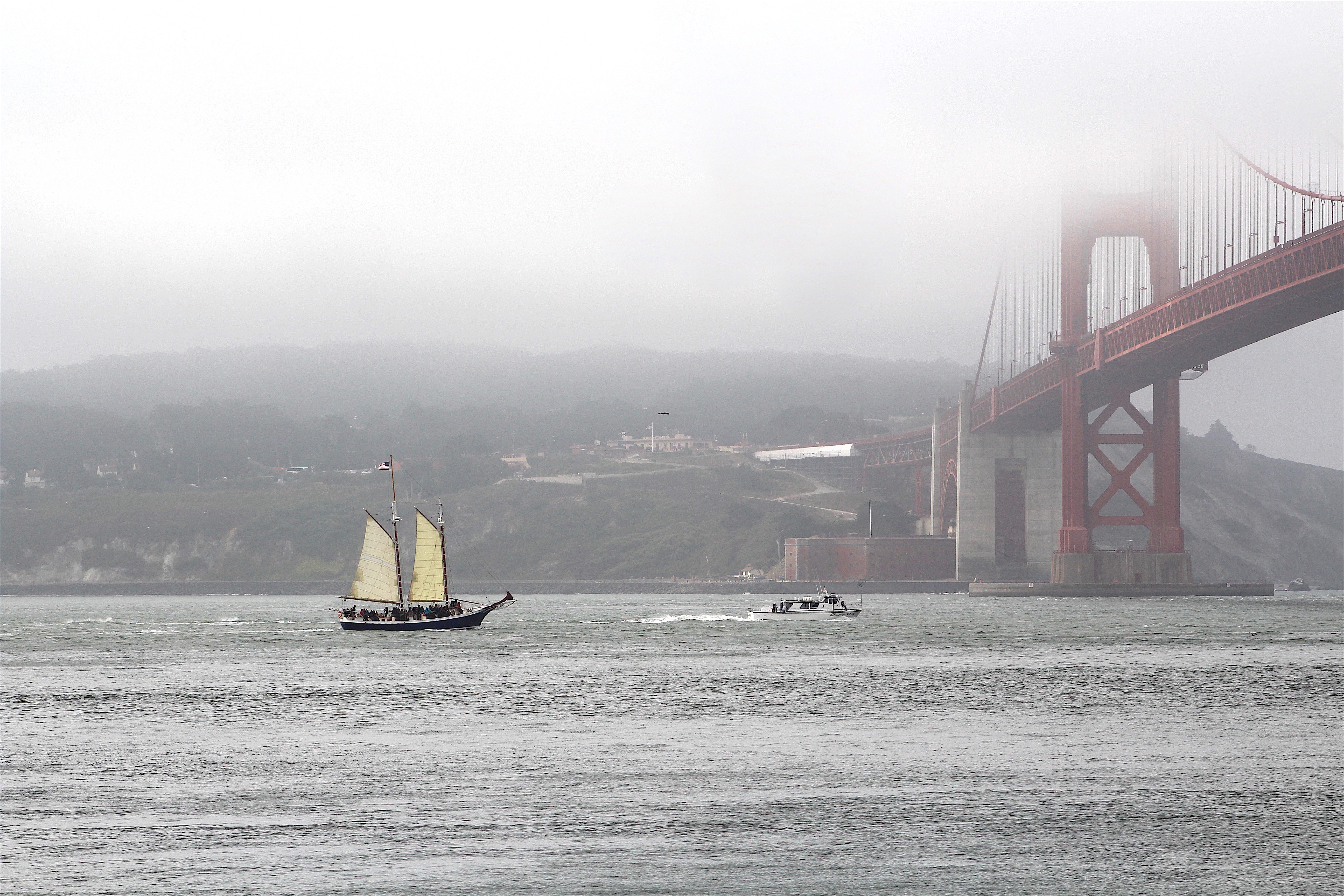
I thought this contrast between a modern Sportfishing boat and an old-style junk was interesting.
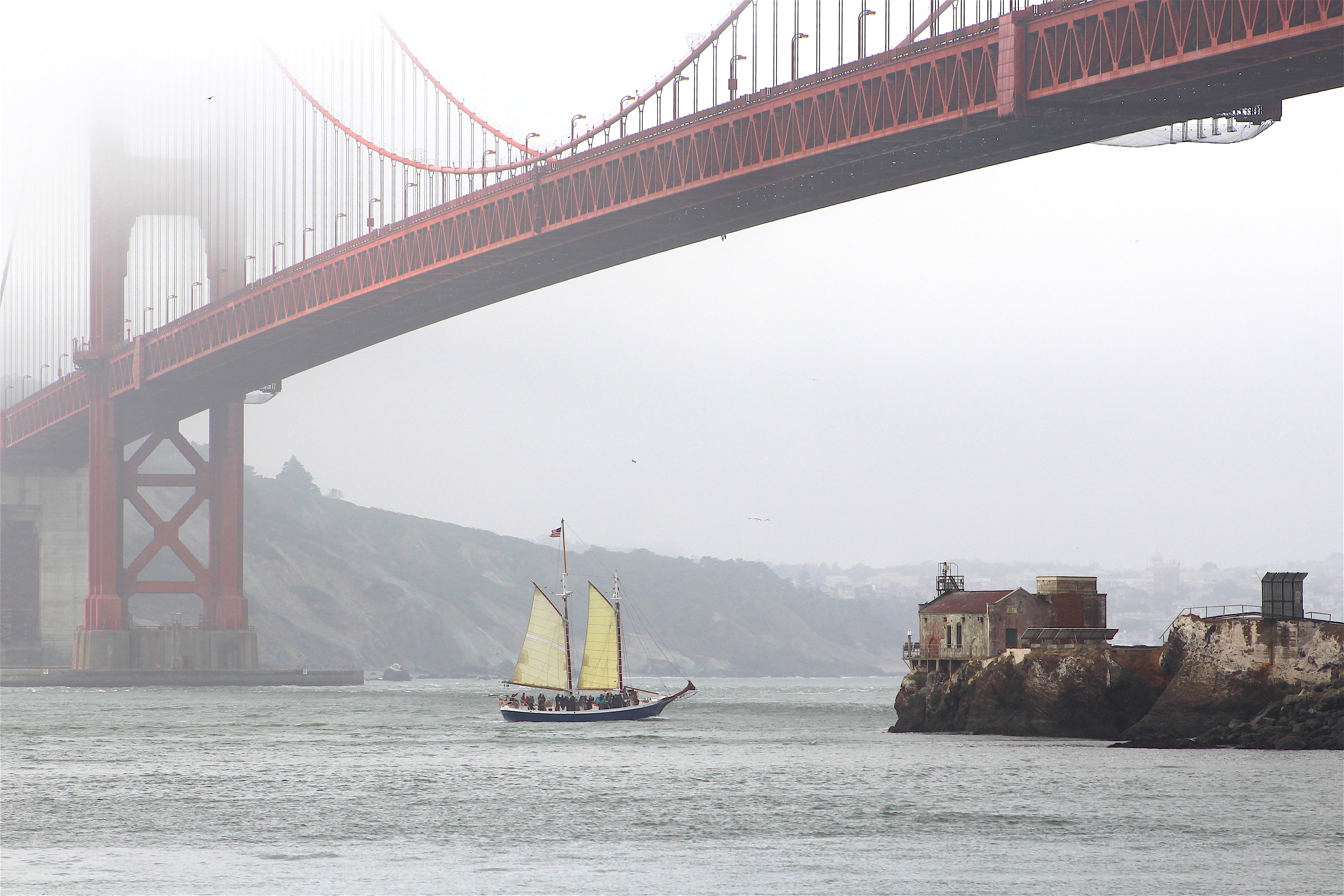
Even the junk itself by itself, and the bridge, were interesting.
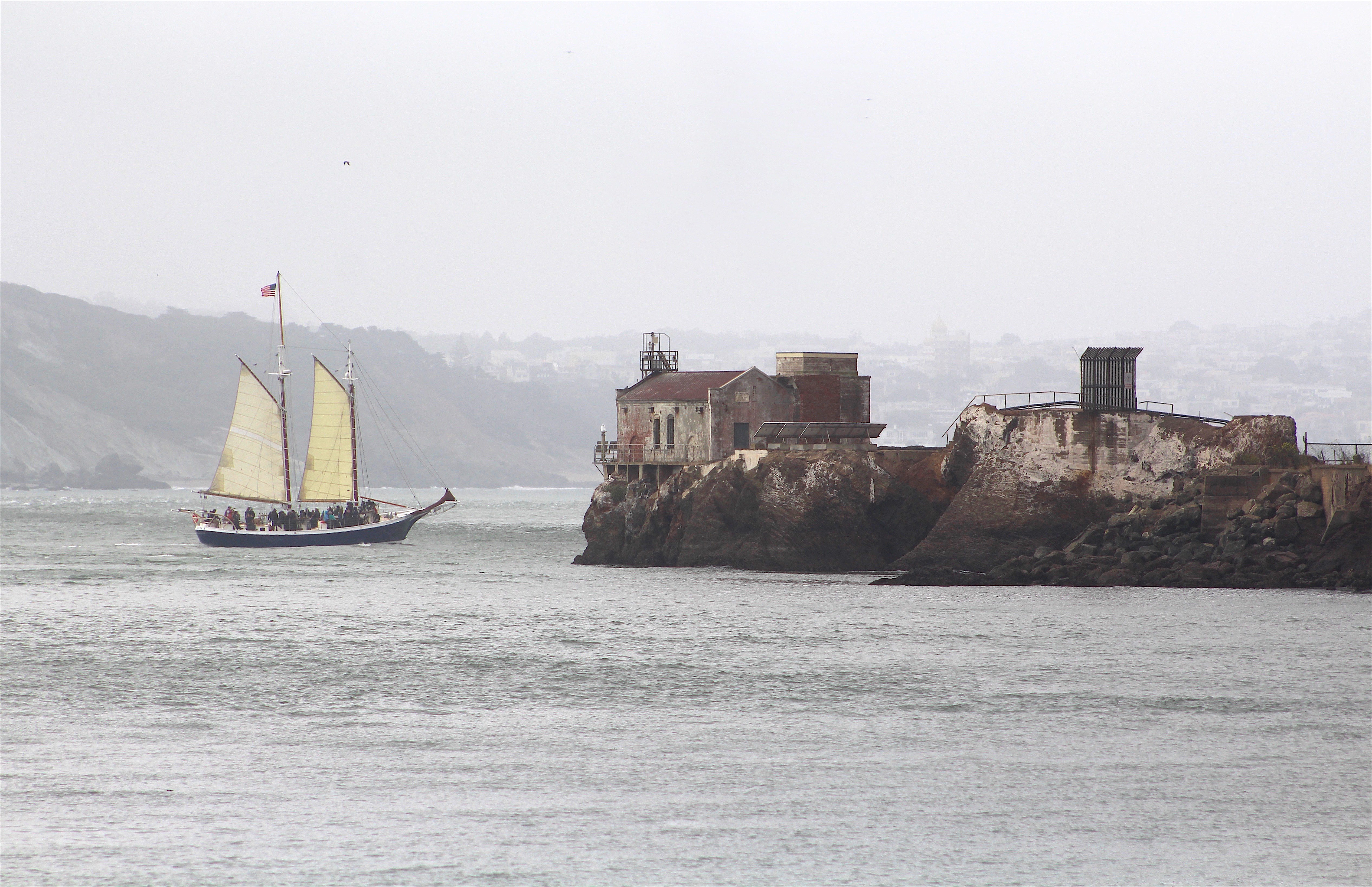
<*}}}}}}}}}>< —I’m not sure it’s the best pier but it’s one of the best.
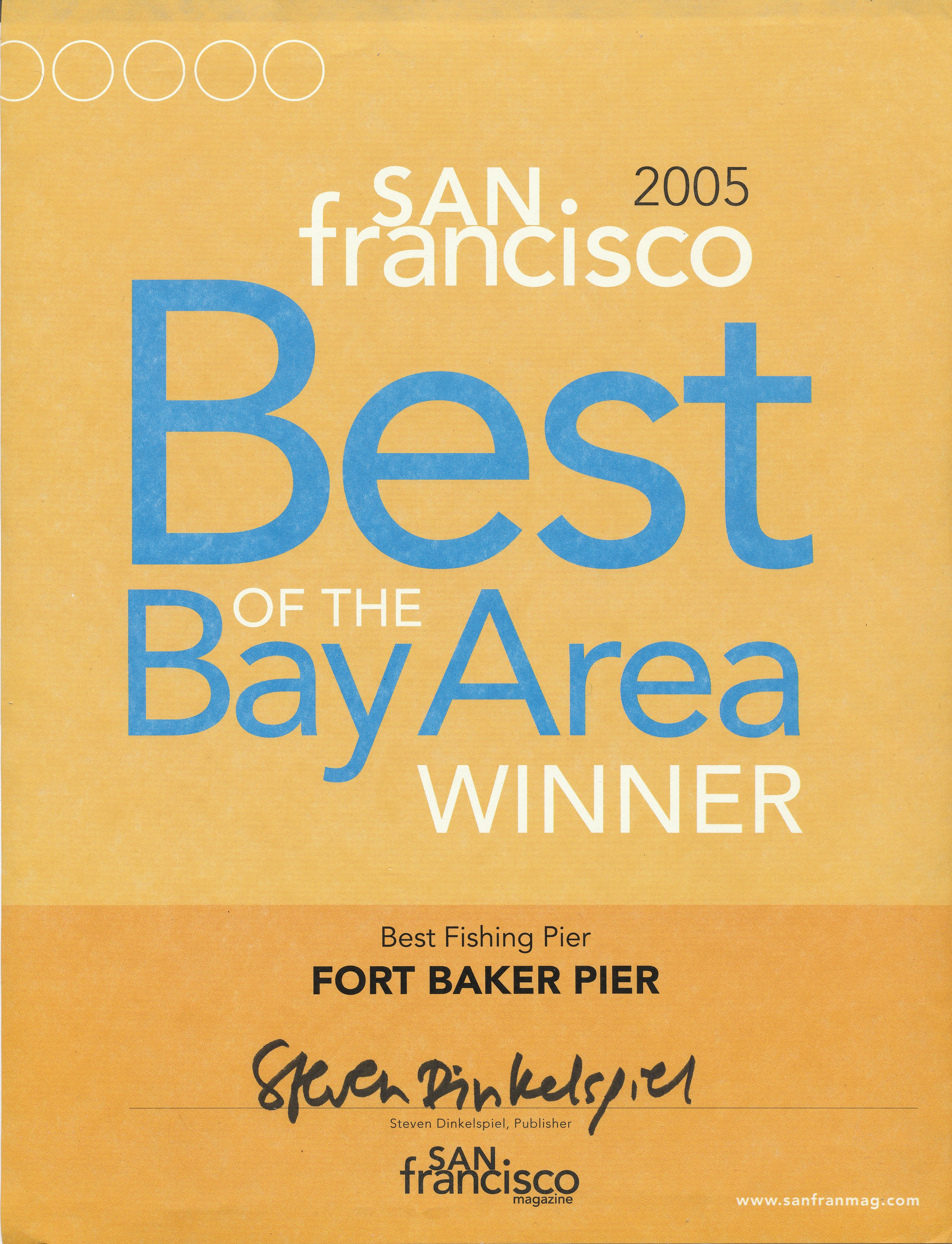
<*}}}}}}}}}>< — Given the usage the pier receives—anglers, tourists in cars looking for the perfect picture, and the thousands of tourists (many who are foreign visitors) who come barreling down the bike path from the Golden Gate Bridge, you would think the park would want to put a good foot forward and leave a good impression for these folk. But perhaps they simply forgot the port-a-potties that sit just a short distance from the pier? There is often a line of people waiting to use the portable outhouses and when they exit the same they are generally holding their noses and warning those in line to be prepared for the stench and filth. The last time I used one of the port-a-potties I noticed a sign that said: “dumping of hazardous material (in the potty) is a federal offense. In my mind the potty itself was a federal offense! It certainly is an embarrassment for the federal government that oversees the park and pier.
History Note. In the 1850s the Lime Point Military Reservation was established to protect the entrance to San Francisco Bay (and it is the oldest of the forts on the Marin Headlands). In 1897 it was renamed Fort Baker. Although diminished in importance after World War I, it would still later serve as the World War II Mine Command Headquarters and the Air Defense Command Headquarters.
The current pier was built in 1937 and saw repairs and modifications in 1940, 1948 and 1985. Today the pier is 358 feet long and 116 feet wide at its widest point.
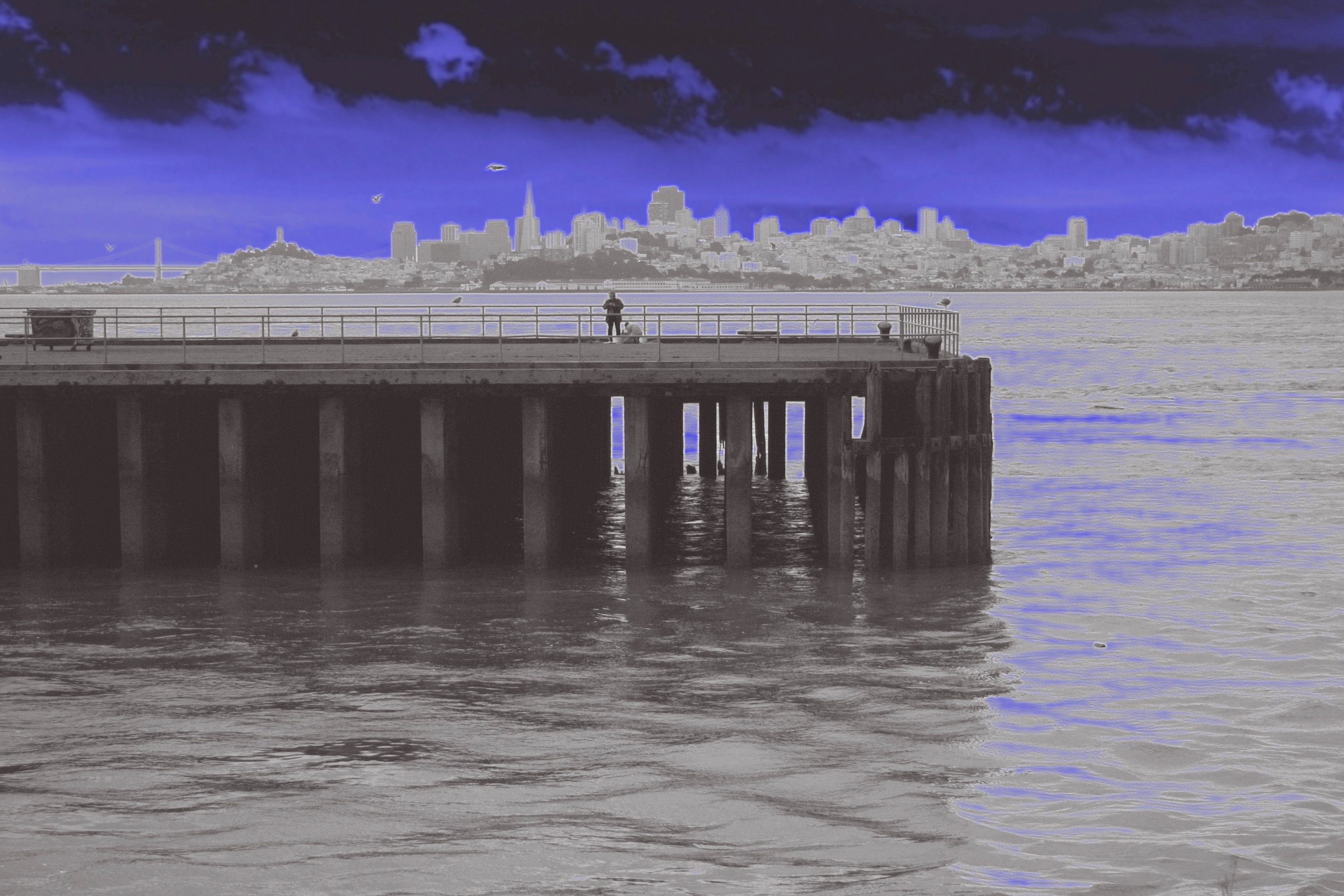
A Fort Baker “mood” picture by Red Fish (Robert Gardner)
Fort Baker Pier Facts
Hours: Gates entering the area are posted as opening at 7:00 A.M. and closing at 5:00 P.M. However, the gates are left open and many people fish on the pier at nights for sharks and rays. (Although there are periodic closures during terrorist alerts).
Facilities: Few! There is limited free parking at the foot of the pier (nine spaces) and some cars can park along the road itself. Probably no more than 20 cars can park altogether although there are additional parking spaces by the museum. There are no lights, benches, or fish cleaning facilities. Just up the street, less than a block away, is the Bay Area Discovery Museum, a good place to take the kids if they tire of the fishing.
Handicapped Facilities: Handicapped parking (one space), the surface of the pier is asphalt, and the railing is 52 inches high.
How to Get There: Take Alexander Avenue off of Highway 101. It is the last exit before driving onto the Golden Gate Bridge going south, and the first exit after the vista point going north. Take Alexander Drive exit and merge onto Sausalito Lateral Road, make first left onto Bunker Road, turn right and stay on Bunker Road (do not pass through the tunnel) down the hill. At the stop sign turn right onto Murray Circle till you see Moore Road. Take Moore Road to the pier.
Management: The Golden Gate Recreation Area.
